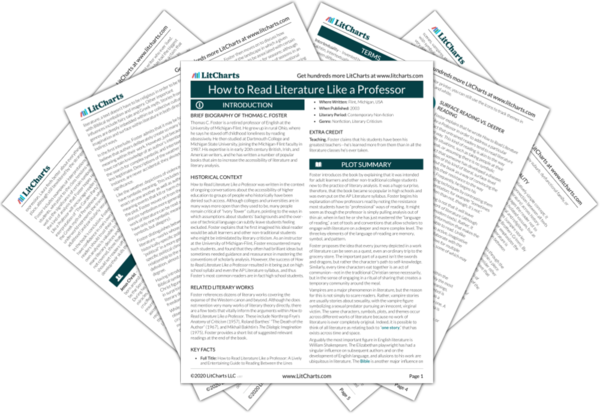Archetypes are figures which are imprinted on readers’ minds through repetition in myth and other cultural narratives, and which are imitated, modified, and subverted within works of literature. The archetype of the hero, for example, began in ancient myths, and was defined by certain qualities such as strength, courage, and physical beauty. Nowadays, a hero figure may appear in literature who shares some of these qualities but not others, and yet is still recognizable as representing the hero archetype.
Identifying archetypes can be tricky, as they can sometimes come in unlikely forms. For example, a character fitting the hero archetype in contemporary literature might be female, whereas in Ancient Greek times all heroes were male. Discovering archetypes depends on the reader’s ability to see patterns, one of the key skills laid out in the book. Pattern recognition consists not only of identifying patterns within a single text, but between texts as well (and is thus closely related to the concept of intertextuality).
As with symbol and metaphor, there is also a specific section of the book dedicated to archetype, which discusses the concept in the context of C.G. Jung’s psychoanalytic writings and how this was then transferred to literary criticism by Northrop Frye. Foster also examines a selection of key archetypes, including the young person on the brink of adulthood, the vampiric predator, the hero (and his unfortunate sidekick, the surrogate), and the Christ figure. Although all these examples are characters, archetypes can take other forms as well, such as the archetype of the sleepy suburb, dysfunctional family, or haunted house.
Archetype and Pattern Recognition ThemeTracker

Archetype and Pattern Recognition Quotes in How to Read Literature Like a Professor
The professor, as the slightly more experienced reader, has acquired over the years the use of a certain "language of reading," something to which the students are only beginning to be introduced. What I'm talking about is a grammar of literature, a set of conventions and patterns, codes and rules, that we learn to employ in dealing with a piece of writing.

Unlock explanations and citation info for this and every other How to Read Literature Like a Professor quote.
Plus so much more...
Get LitCharts A+Memory. Symbol. Pattern. These are the three items that, more than any other, separate the professorial reader from the rest of the crowd.
"Always" and "never" are not words that have much meaning in literary study. For one thing, as soon as something seems to always be true, some wise guy will come along and write something to prove that it's not.
There is only one story. Ever. One. It's always been going on and it's everywhere around us and every story you've ever read or heard or watched is part of it.
Fiction and poetry and drama are not necessarily playgrounds for the overly literal. Many times I'll point out that a character is Christlike because he does X and Y and you might come back with, "But Christ did A and Z and his X wasn't like that, and besides, this character listens to AC/DC."
Don't bother looking for the originals, though. You can't find the archetype, just as you can't find the pure myths. What we have, even in our earliest recorded literature, are variants, embellishments, versions, what Frye called "displacement" of the myth.
We—as readers or writers, tellers or listeners—understand each other, we share knowledge of the structures of our myths, we comprehend the logic of symbols, largely because we have access to the same swirl of story.
There, just inside the door, stood a wide, shallow tray full of pots of pink lilies. No other kind. Nothing but lilies—canna lilies, big pink flowers, wide open, radiant, almost frighteningly alive on bright crimson stems.











